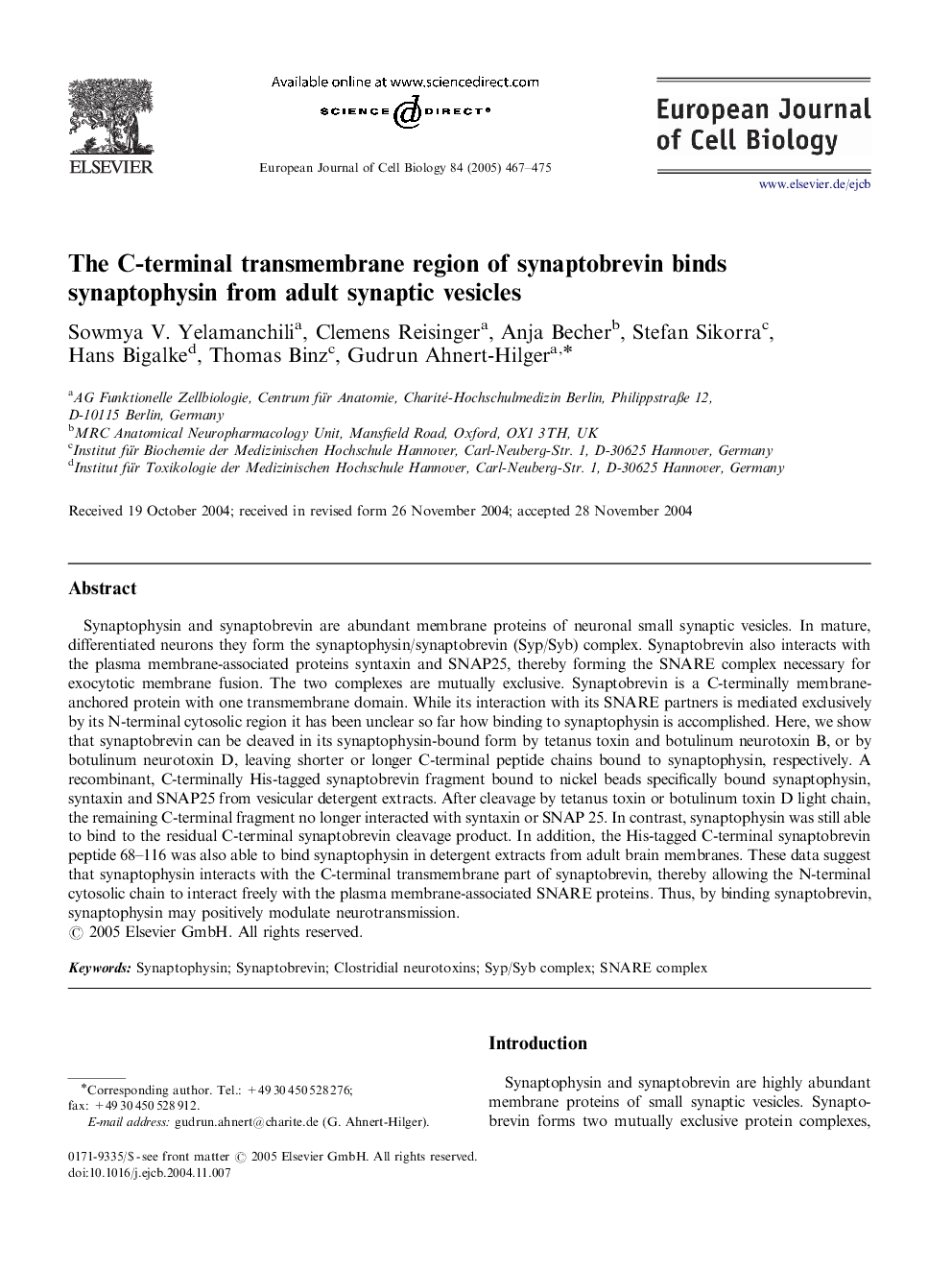| کد مقاله | کد نشریه | سال انتشار | مقاله انگلیسی | نسخه تمام متن |
|---|---|---|---|---|
| 9912437 | 1549787 | 2005 | 9 صفحه PDF | دانلود رایگان |
عنوان انگلیسی مقاله ISI
The C-terminal transmembrane region of synaptobrevin binds synaptophysin from adult synaptic vesicles
دانلود مقاله + سفارش ترجمه
دانلود مقاله ISI انگلیسی
رایگان برای ایرانیان
کلمات کلیدی
موضوعات مرتبط
علوم زیستی و بیوفناوری
علوم کشاورزی و بیولوژیک
دانش گیاه شناسی
پیش نمایش صفحه اول مقاله

چکیده انگلیسی
Synaptophysin and synaptobrevin are abundant membrane proteins of neuronal small synaptic vesicles. In mature, differentiated neurons they form the synaptophysin/synaptobrevin (Syp/Syb) complex. Synaptobrevin also interacts with the plasma membrane-associated proteins syntaxin and SNAP25, thereby forming the SNARE complex necessary for exocytotic membrane fusion. The two complexes are mutually exclusive. Synaptobrevin is a C-terminally membrane-anchored protein with one transmembrane domain. While its interaction with its SNARE partners is mediated exclusively by its N-terminal cytosolic region it has been unclear so far how binding to synaptophysin is accomplished. Here, we show that synaptobrevin can be cleaved in its synaptophysin-bound form by tetanus toxin and botulinum neurotoxin B, or by botulinum neurotoxin D, leaving shorter or longer C-terminal peptide chains bound to synaptophysin, respectively. A recombinant, C-terminally His-tagged synaptobrevin fragment bound to nickel beads specifically bound synaptophysin, syntaxin and SNAP25 from vesicular detergent extracts. After cleavage by tetanus toxin or botulinum toxin D light chain, the remaining C-terminal fragment no longer interacted with syntaxin or SNAP 25. In contrast, synaptophysin was still able to bind to the residual C-terminal synaptobrevin cleavage product. In addition, the His-tagged C-terminal synaptobrevin peptide 68-116 was also able to bind synaptophysin in detergent extracts from adult brain membranes. These data suggest that synaptophysin interacts with the C-terminal transmembrane part of synaptobrevin, thereby allowing the N-terminal cytosolic chain to interact freely with the plasma membrane-associated SNARE proteins. Thus, by binding synaptobrevin, synaptophysin may positively modulate neurotransmission.
ناشر
Database: Elsevier - ScienceDirect (ساینس دایرکت)
Journal: European Journal of Cell Biology - Volume 84, Issue 4, 22 April 2005, Pages 467-475
Journal: European Journal of Cell Biology - Volume 84, Issue 4, 22 April 2005, Pages 467-475
نویسندگان
Sowmya V. Yelamanchili, Clemens Reisinger, Anja Becher, Stefan Sikorra, Hans Bigalke, Thomas Binz, Gudrun Ahnert-Hilger,